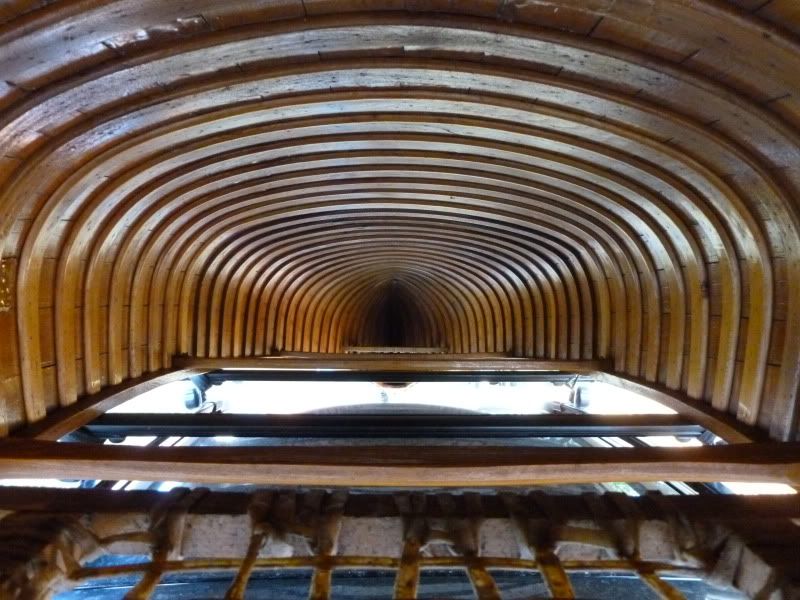This is a 17 foot Chestnut Cruiser circa early 70’s (I’ll have to check the log for the exact year) from Keewaydin.
Don’t pay attention to the measurements of the canoe. During the 60’s and 70’s the guides at Keewaydin pulled in the width to make the canoe deeper and more round bottom and, hopefully, faster under load. This is also why the sheer looks misshapen. Canoes are not stored on their sides at Keewaydin. The canoe fleet is one of their biggest physical assets, totaling over 130, so despite the hard use they get, they are generally taken care of very well.
Your canoe has also been re-built 3 or 4 times or so and canoes that get used like this tend to lose their shape, particularly the depth over 20-30 years of heavy tripping.
The wannigan ribs are, as far as I know, Keewaydin’s brainchild, not Chestnuts. As I understand it this was a special order that Keewaydin came up with and had Chestnut put them on every canoe they ordered, even the double ribbed prospectors and guide specials had them. They are fastened with copper nails clinched over. They serve the purpose of adding strength to the hull where the wannigans are loaded in the canoe, and protecting the ribs under them from damage.
It wouldn’t surprise me if the seats where original. Chestnut wasn’t even coming close to building their canoes as advertised in the 70’s as the company was heading toward doom. Original late model chestnuts that came to the island (Keewaydin) had either caned, hide, or slat seats. Most where caned, but never strung with string or cord. Only Fraser strung his seats with string for Keewaydin.
Keewaydin does trips in Manitoba, Ontario, Quebec, and Labrador just about every summer. The average canoe probably travels 300-400 miles a season so over a 30 year period your canoe has seen some territory.




